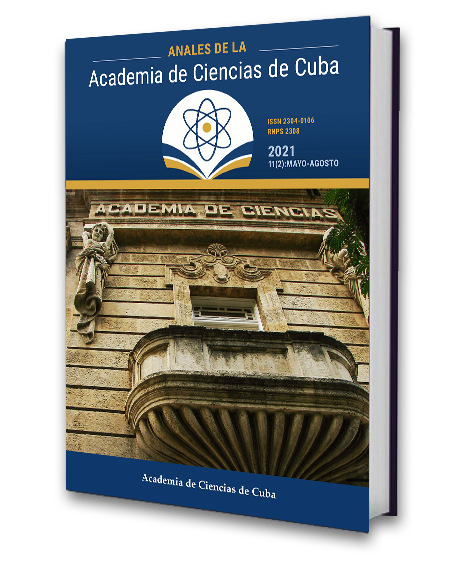Serological markers of Hepatitis B virus, 26 years after first immunization in Cuba
Keywords:
hepatitis B virus, Heberbiovac HB, single nucleotide polymorphism, interleukin 12Abstract
Introduction: Prevention and control of hepatitis B in Cuba has been possible due to introduction of Cuban vaccine Heberbiovac HB, in the National Program of Immunization (NPI). Actually, our health system has the challenge to achieve the elimination of hepatitis B. Objective. To evaluate the prevalence of infection (HBsAg, DNA HBV) and protection (antibodies anti-HBsAg) markers of hepatitis B virus, in blood donors and a vulnerable group, and identify the influence of the immunogenetics of the Cuban population in humoral response to Heberbiovac HB vaccine. Methods: Hepatitis B virus markers for infection and protection were measured in blood donors and patients under hemodialysis treatment, using immunoenzymatic and molecular assays. Also, nucleotide sequencing was used to determine single nucleotide polymorphisms (SNP) of interleukin 12 (IL-12), IL-12A G>A e IL-12B A>C, in individuals boosted with a single dose of Heberbiovac HB. Results: HBsAg prevalence was low in Cuban blood donors, and zero in donors born after the implementation of HBV vaccination in NPI. In hemodialysis patients, HBsAg prevalence was 5,95%, and 89,47% of them had protector levels of anti-HBsAg. In individuals with SNP IL-12 combinations IL-12A/IL-12B; GG/AC and GG/AA hiperprotectors levels of anti-HBsAg were identified, post-vaccination, as opposed to the AA/AA combination. Conclusions. The findings show the immunogenicity of Heberbiovac HB and confirm the efficacy of the Cuban vaccination program. It was demonstrated for the first time that IL-12 SNP could impact the level of anti-HBsAg antibodies after immunization in the Cuban population.Downloads
Downloads
Published
How to Cite
Issue
Section
License
The journal Anales de la Academia de Ciencias de Cuba protects copyright, and operates with a Creative Commons License 4.0 (Creative Commons Attribution-NonCommercial License 4.0). By publishing in it, authors allow themselves to copy, reproduce, distribute, publicly communicate their work and generate derivative works, as long as the original author is cited and acknowledged. They do not allow, however, the use of the original work for commercial or lucrative purposes.
The authors authorize the publication of their writings, retaining the authorship rights, and assigning and transferring to the magazine all the rights protected by the intellectual property laws that govern in Cuba, which imply editing to disseminate the work.
Authors may establish additional agreements for the non-exclusive distribution of the version of the work published in the journal (for example, placing it in an institutional repository or publishing it in a book), with recognition of having been first published in this journal.
To learn more, see https://creativecommons.org






